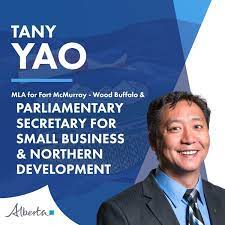This series has been informed by the public meeting of the Standing Committee of Alberta Heritage Savings Trust Fund. An overview of the meeting can be found on Abpolecon.ca here. Part 1 investigated information the Alberta Investment Management Corporation (AIMCo) supplies to the Securities and Exchange Commission on their quarterly Form 13F filing. Some unusual findings were cited about AIMCo’s U.S. holdings, that to my knowledge have not been publicized before. The 13F filing is the most current disclosure of AIMCo’s assets to 30 September 2023.
In Part 2, I examine AIMCo’s total portfolio and performance metrics which are disclosed in its 2022 annual report, the latest available.

At the Heritage Fund public meeting on 30 November 2023 (Hansard record), one of the problems identified by participating citizens was the absence of disclosure for Heritage Fund investments. One of the cornerstones of Westminster parliamentary democracy is legislators’ ability to obtain information about government programs and government

agencies.
The following exchange between MLA Samir Kayande and Lowell Epp an Assistant Deputy Minister, Treasury and Risk Management reveals a hesitancy among officials to share information.
Member Kayande: So we have heard tonight, for sure, more requests for greater transparency on investments and disclosures. Is there analysis that you’ve done or that you’re willing to do on how the heritage savings trust fund investment disclosure differs from those who are known to be best in class? I’m thinking about CalPERS, for example, where you know everything that they’re invested in, including, you know, the various different GPs and LPs. Has that been proposed, or has that been contemplated? Is that something you’re willing to do?
Mr. Epp: It’s been discussed, and the government, working with AIMCo, has decided that the portfolio’s returns could be harmed if it was live information. Now, other parties have made a different decision, but that reflects the discussion that’s happened.
Member Kayande: So is it a political discussion, or is it an administrative discussion? I mean, CalPERS has clearly decided that the harms that they suffer, if any, are less than the benefits that they gain from providing that disclosure. It’s certainly not real time, but there is very, very – what’s the word? It’s very clear, and there’s a lot of it.
Mr. Epp: It’s not a political discussion; I can assure you of that. It’s purely economic.
Member Kayande: So do you have analysis, then, that you could provide us on what the trade-offs are?
Mr. Epp: No, we do not. (p. HS-32, 30 November-emphasis added.)
Alberta disclosure compared with Norges bank – the gold standard
The official objection to disclosure is that the portfolio’s return will be “harmed.” As Kayande noted, as did other citizens at the meeting, other large investment managers, with much more influence in financial markets than AIMCo includes the the NOK 12.4-trillion ($1.19 Trillion USD) Norges Bank -managed Government Pension Fund.
The Norwegian fund’s website indicates that the fund has 11,549 investments in 69 countries. The investment structure is simple with only 4 investment categories- equities, fixed income, real estate and renewable energy infrastructure. The website conveniently allows readers to search for holdings by company and country. For example, at the end of 2022, the Fund held NOK 183.2-billion in 173 investments in Canada or $18.6-billion USD ($24.6-billion CAD).
Significantly, the Norwegian Pension Fund holds no shares in Imperial Oil, Cenovus, Suncor or Canadian Natural Resources Ltd. also known as the Big Four oilsands producers. While researchers can scrutinize the Norwegian portfolio in granular detail, Albertans are unable to know what the Heritage Fund holds in the Big Four (except U.S. inter-listed securities), let along office towers in Calgary which are lying unleased (perhaps costing the Alberta treasury millions each year).
According to Epp disclosure would “harm” Albertans’ portfolio returns. But what if over-investment in Alberta companies and Calgary office towers were costing Albertans millions in foregone economic returns? As he has indicated the only interest should be economic gain not favouring home grown industries. Shouldn’t Albertans be allowed to judge the efficacy and competence of the AIMCo-Treasury Board and Finance officialdom? And more to the point, it is essential that the MLAs on the Standing Committee ask the searching follow-up questions.

Politics of Alberta vs. Norway’s savingsAlberta Government politicians and officials hate the comparison with Norway’s Fund which was started after the Heritage Fund was established. As noted in Part 1, officials do not even wish to calculate the size of the Fund if the original deposit and reinvestment rules were applied through time. It is further objected that had the Fund not been tapped, Alberta’s public services would be poorer or taxes higher than what is now the case. Further, there is a fond political suspicion that Ottawa would not have permitted Alberta to build up such immense wealth over time. These perspectives have some validity, but they do not detract from the Alberta government’s reluctance to share basic financial information with its citizens. |
AIMCo’s private equity investment disclosure is poor with no amounts provided which may reflect the difficulties or opacity of reporting by private equity managers except for its largest holdings.
AIMCO’s Portfolio & Performance
Heritage Fund
In 2022-23, the Heritage Fund (AIMCo) actually lost $114-million. But you wouldn’t know that from reading the introductory pages of its Annual Report which advertised a 5-year investment return of 6.4 per cent (p.1). While reporting longer-term performance is superior to one-year returns, annual reports have become promotional and communications documents- not informational. This communications method assists time-constrained business reporters and analysts who become potentially vulnerable to accepting the marketing of investment performance. Added to this is the tendency of the media to glorify the track record of investment professionals and to promote the profile of the industry and the professionals. In other words, not all business media have become cheerleaders or “shills” for the industry the covers but the reader must be very discriminating.
For inquisitive minds the important number was buried in the audited financial statements at page 24 revealing a “loss from operations” of $114-million. What did the report tell us about the $114-million operating loss? According to Finance minister Nate Horner’s introductory letter, the $114-million operating loss was offset by “$626 million increase in unrealized gains” (p. 3). In Part 3 of this series, I examine the drivers of net income including market gains and losses as well as operating income and losses.
Limited disclosure
The Heritage Fund presents limited information about the Fund’s top Canadian and global equity, private equity, and real estate holdings. At 31 March 2023, three of the fund’s top Canadian equity holdings were in Alberta-based companies: Enbridge, TC Energy and the Canadian Pacific Railway. AIMCo’s global equities top ten reveals reveals U.S. holdings.a piddly $18.4-million in Apple shares (AHSTF 2022-23 Annual Report, p. 13) compared to a .$84.1 or 4.5 per cent weight in the obscure Fairfax Financial Holdings Switzerland Gmbh-Pfd 8 shares. More information is available through the Securities and Exchange Commission’s EDGAR disclosure system which includes AIMCo’s U.S> holdings for all its clients’ assets.
Overall portfolio structure and performance
According to AIMCo’s 2022 Annual Report with information as of 31 December 2022, AIMCo had $158-billion in assets under management (AUM). AIMCo had 9 pension plan clients with AUM of $110.7-billion; five endowment funds, including the AHSTF with AUM of $28.8-billion; six clients in its Cash Reserve Account pool ($4.1-billion); three insurance clients, including Workers’ Compensation Board ($12.7-billion); and five specialty fund clients including Alberta Health Services for a total of $1.7-billion
| Table 1 AIMCO’s clients
Market Value ($Millions) |
Money Market & Fixed Income | Equities | Private Markets | |
| Pension Plans | ||||
| Local Authorities | 58,526 | 26% | 35% | 39% |
| Alberta Teachers’ Retirement Fund3 | 22,269 | 18% | 58% | 24% |
| Public Service | 17,074 | 17% | 50% | 33% |
| Management Employees | 6,108 | 23% | 40% | 37% |
| Special Forces | 3,852 | 28% | 41% | 31% |
| Universities Academic | 2,236 | 27% | 0% | 73% |
| Judges Supplementary Retirement | 242 | 40% | 38% | 22% |
| Judges | 168 | 33% | 39% | 28% |
| Management Supplementary Retirement | 178 | 30% | 47% | 23% |
| 110,653 | ||||
| Endowment Funds | ||||
| Heritage Savings Trust | 19,801 | 19% | 37% | 44% |
| Heritage Medical Research | 2,225 | 19% | 40% | 41% |
| Heritage Scholarship Trust | 1,465 | 20% | 37% | 44% |
| Heritage for Science and Engineering | 1,327 | 19% | 39% | 42% |
| Government Funds | 4,018 | 100% | 0% | 0% |
| 28,836 | ||||
| Cash Reserve Account | ||||
| General Revenue | 3,571 | 100% | 0% | 0% |
| Long Term Disability Bargaining Unit | 234 | 46% | 36% | 18% |
| Unclaimed Property Fund | 134 | 100% | 0% | 0% |
| Alberta Risk Management Fund | 72 | 100% | 0% | 0% |
| Long Term Disability Management | 41 | 44% | 33% | 23% |
| A.L. Sifton Estate | 1 | 100% | 0% | 0% |
| 4,053 | ||||
| Insurance Funds | ||||
| Workers’ Compensation Board – Alberta | 12,112 | 29% | 34% | 37% |
| Credit Union Deposit Guarantee | 393 | 100% | 0% | 0% |
| Agriculture Crop Insurance | 263 | 100% | 0% | 0% |
| 12,768 | ||||
| Specialty Funds | ||||
| Alberta Health Services | 1,413 | 77% | 20% | 3% |
| Alberta Securities Commission | 116 | 70% | 30% | 0% |
| City of Medicine Hat | 105 | 40% | 60% | 0% |
| Special Areas Long Term Account | 32 | 100% | 0% | 0% |
| AIMCo Retirement Compensation Arrangement Fund | 2 | 44% | 56% | 0% |
| 1,668 | ||||
| Source: AIMCo 2022 Annual Report, Now and in the Future, p. 12. | 157,978 |
Performance – a preliminary analysis
According to its 2022 annual report AIMCo reports performance in 20 categories including five aggregate categories- Aggregate, Balanced funds aggregate, Government funds, Aggregate Public Markets, Public Equities, and Private Markets.The table below provides the performance of these six major pools or funds against the benchmarks set by the AIMCo board.
Table 2 examines AIMCo’s 5-year performance against benchmarks which AIMCo’s board, appointed by the provincial cabinet, sets for AIMCo’s executives and managers. Five-year performance is a better measure than 1-year performance since investment management is a long-term endeavour. The first part of the table shows five broad asset classes with 18 sub-categories.
The overall structure of these portfolios is determined by the various clients by setting ranges for the various investment classes which AIMCo offers its clients. Within these ranges, AIMCo oversees security selection and deviations from the midpoint in the range. In theory, portfolio allocation should drive overall performance, absent the effects of poor security selection. A heavy bias to Canadian U.S. inter-listed stocks confirms “home bias” and thus vitiates the whole goal of diversification by geography, markets, and industry.
As discussed in Part 1, AIMCo’s U.S. securities have missed the significant run-up in the value of shares of the Magnificent Seven. It is not possible to determine how effectively AIMCo has managed its sizable U.S. equity holdings from the Heritage Fund’s annual report. Only a global equity return versus the benchmark is given.
Judging by its current U.S. holdings, Albertans and Alberta public sector workers and pensioners, cannot expect out performance based on AIMCo’s current U.S. securities selection.
I have added the benchmarks set by the Heritage Fund management (Treasury Board and Finance) but the comparison is muddied because the Heritage Fund’s fiscal year end is March 31 while AIMCo’s measures are a calendar year basis. Most of the benchmarks are close, but generally the Heritage Fund’s (that is Treasury Board and Finance) benchmarks are higher, especially for private markets, money market and public equities.
| Table 2- AIMCo 5-year Performance Compared to Benchmarks | ||||
| Asset Class | Market Value ($millions) | AIMCo 5-year Return (%) | AIMCo Benchmark | Heritage Fund 2022-23 Benchmark (%) |
| Total AIMCo Fund Aggregate1 | $135,030 | 5.1 | 4.4 | 6.7 |
| Balanced Funds Aggregate | $111,242 | 5.4 | 4.9 | n/a |
| Government Funds Aggregate | $23,789 | 2.9 | 1.9 | n/a |
| Aggregate Public Investments | $79,454 | 3.6 | 3.8 | n/a |
| Money Market and Fixed Income2 | $36,976 | 1.1 | 0.4 | 0.9 |
| Public Equity | 42,246 | 5.4 | 6.7 | 8.4 |
| Canadian Equity | 7,890 | 5.4 | 6.8 | 8.8 |
| Global Equity | 23,733 | 6.9 | 7.8 | 8 |
| Global Minimum Variance | 2,015 | 4.6 | 6.1 | n/a |
| Emerging Market Equity | 5,611 | -1.3 | 0.2 | 8 |
| Global Small Cap Equity | 2,997 | -7.8 | -12.9 | n/a |
| Private Markets | 55,577 | 8.2 | 5.6 | 8.7 |
| Private Equities | 11,916 | 16.7 | 7.5 | n/a |
| Real Estate | 22,973 | 3.8 | 4.1 | 3.5 |
| Infrastructure | 17,422 | 10.4 | 6.7 | 6.7 |
| Renewable Resources | 3,045 | 12.6 | 6.6 | 6.7 |
| AIMCo Strategic Opportunities Pool | 221 | -2.5 | 7.8 | 8 |
| Money Market and Fixed Income | 36,976 | 1.1 | 0.4 | 1.6 |
| Money Market | $703 | 1.3 | 1.2 | n/a |
| Universe Bonds | $13,720 | 0.8 | 0.3 | n/a |
| Mortgages | $4,616 | 3.1 | 1.8 | n/a |
| Fixed Income Long-Term | $5,864 | -1.2 | -1.5 | n/a |
| Private Debt and Loan | $6,138 | 5.8 | 1.8 | n/a |
| Real Return Bonds | $1,296 | 1.5 | 1.3 | n/a |
| Segregated Assets -Short Term | $621 | 1.1 | 1.1 | n/a |
| Segregated Assets Long Term | $4,018 | 0.8 | 0.6 | n/a |
| Source: AIMCo 2022 Annual Report, Now and in the Future p. 17. | ||||
The preceding table shows that AIMCo portfolio managers have been proficient in beating benchmarks in fixed income markets but not according to the Heritage Fund benchmarks. While this discrepancy may be an artifact of the March/December year-ends it begs the question as to whether Treasury Board and Finance officials are privately displeased with the efforts of AIMCo’s short-term money managers. As shown above, the province has about $4-billion in money market investments which conceivably could be managed in-house. If the province does move its short-term investments in-house, it will be the first indication that the department, whose minister recommended establishment of an arms-length manager16 years ago, is officially displeased with AIMCo’s performance.
Alberta taxpayers and citizens deserve much more in the quality of financial reporting of the significant assets managed by the Government of Alberta.
Related Posts
Heritage Fund annual public meeting- Gaza, transparency, and many unanswered questions
Can AIMCo be Fixed? (2)- Kenney redefines the pension bargain